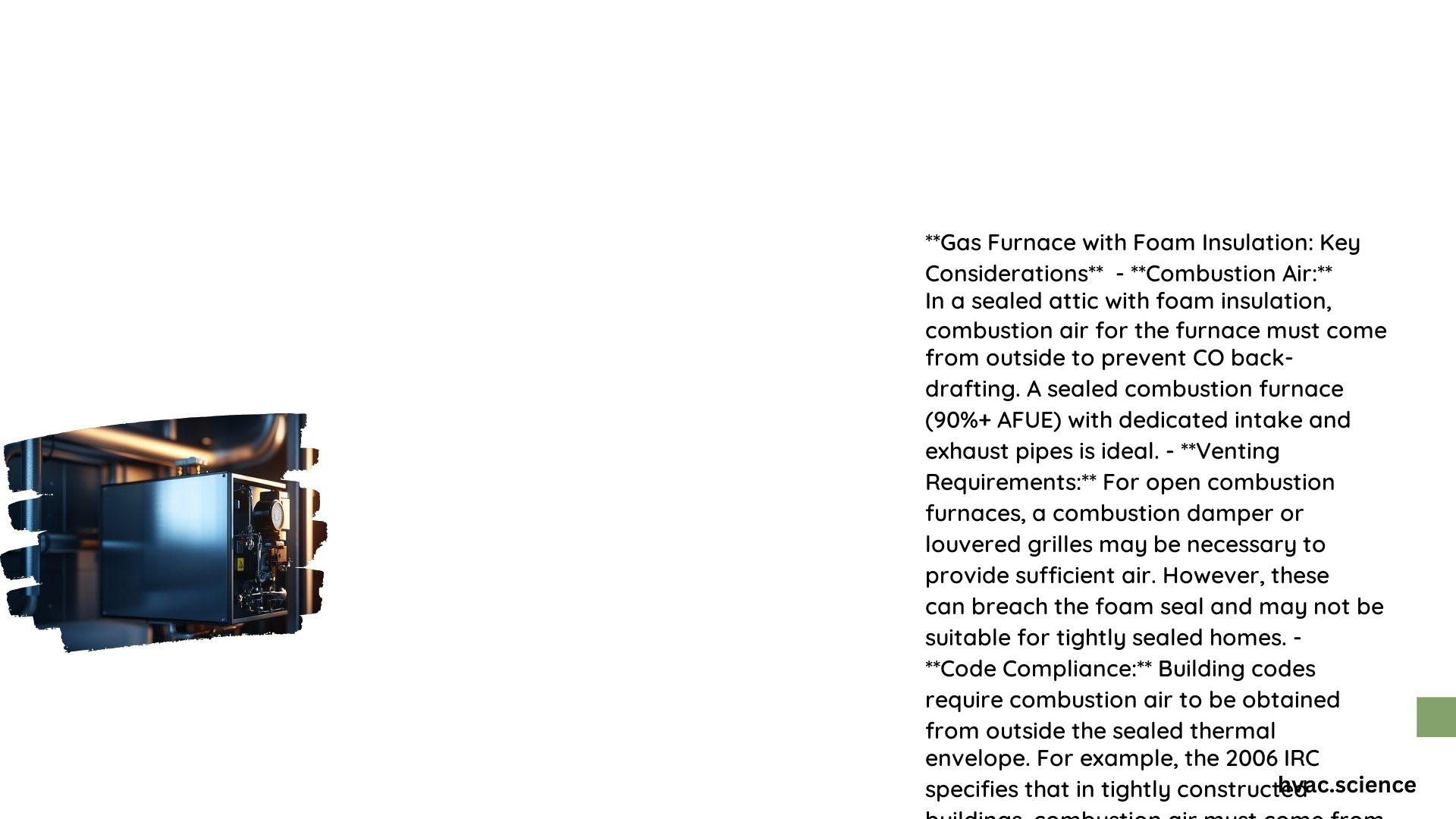Spray foam insulation has become a popular choice for homeowners seeking to improve the energy efficiency of their homes. However, the installation of spray foam insulation can have a significant impact on the performance and efficiency of a gas furnace. In this comprehensive blog post, we will explore the various aspects of using a gas furnace in a home with spray foam insulation, including its impact on energy efficiency, the role of combustion air, the differences between sealed combustion and atmospheric furnaces, safety considerations, and product recommendations.
How Does Spray Foam Insulation Affect the Performance and Energy Efficiency of a Gas Furnace?
What is the Impact on Energy Efficiency and Heat Retention?
Spray foam insulation significantly enhances the energy efficiency of a home, which in turn affects the performance of a gas furnace. Here are the key points:
- Reduced Heating and Cooling Loads: Spray foam insulation creates a highly airtight and well-insulated environment, reducing the heating and cooling loads of the home. This can lead to a situation where the existing gas furnace may be oversized for the newly insulated home, potentially resulting in inefficiencies such as inadequate humidity removal during summer months.
- HVAC Sizing: The improved insulation can reduce the required HVAC system size by up to 35% without compromising comfort. This means that a smaller, more appropriately sized furnace might be necessary to maintain optimal performance and efficiency.
- Performance Metrics: While there are no specific calculations provided, the general consensus is that spray foam insulation reduces energy consumption by creating a tighter building envelope, which can lower utility bills by up to 20%.
How Does Spray Foam Insulation Impact the Availability and Quality of Combustion Air?
Spray foam insulation can severely impact the availability and quality of combustion air for gas furnaces, particularly those that are not designed for sealed environments:
- Ventilation Requirements: Gas furnaces that rely on atmospheric combustion (drawing air from the surrounding environment) can face significant issues in a spray foam insulated attic. The insulation seals the attic, preventing the necessary ventilation for combustion, which can lead to backdrafting and the potential release of carbon monoxide into the home.
- Combustion Air Solutions: To mitigate this, solutions such as installing a sealed combustion furnace, which draws combustion air directly from outside through a dedicated pipe, are recommended. Alternatively, combustion dampers or louvered grilles can be used, but these are less ideal as they compromise the integrity of the spray foam seal.
What are the Differences Between Sealed Combustion and Atmospheric Furnaces?

How Suitable are Sealed Combustion Furnaces for Foam-Insulated Environments?
- Sealed Combustion Furnaces: These are highly suitable for foam-insulated environments because they draw combustion air directly from outside through a sealed pipe, eliminating the need for ventilation within the insulated space. This ensures safe and efficient operation.
- Atmospheric Furnaces: These are not recommended for foam-insulated attics due to the lack of ventilation, which can lead to dangerous backdrafting and carbon monoxide issues.
What are the Safety Considerations When Using a Gas Furnace with Spray Foam Insulation?
What Safety Codes, Regulations, and Best Practices Should Be Followed?
- Depressurization Tests: It is crucial to perform depressurization tests to determine if the attic qualifies as a confined space and if the furnace is receiving sufficient combustion air.
- Installation Practices: Ensure that the furnace is installed in accordance with local building codes and manufacturer specifications. For example, using sealed combustion furnaces or ensuring proper ventilation if atmospheric furnaces are used.
- Carbon Monoxide Detectors: Installing low-level carbon monoxide detectors is highly recommended to monitor for potential backdrafting issues.
What are the Recommended Installation Steps and Costs for a Gas Furnace in a Spray Foam Insulated Home?
What are the Installation Steps and Costs for Sealed Combustion Furnaces?
- Sealed Combustion Furnaces: These are the recommended choice. The installation involves connecting the furnace to a dedicated combustion air pipe that draws air from outside. This ensures safe operation and can be more cost-effective in the long run due to energy savings.
- Costs and Timelines: The costs of installing a sealed combustion furnace can be higher upfront compared to atmospheric furnaces. However, the long-term energy savings and safety benefits justify the investment. The timeline for installation can vary depending on the complexity of the job but typically involves a few days for the installation of the furnace and associated ventilation systems.
Reference Links
- PV Heating, Cooling & Plumbing: “5 Ways Spray Foam Insulation Impacts HVAC Performance” – This article provides detailed insights into how spray foam insulation affects HVAC systems, including gas furnaces, and the safety considerations involved.
- NHSaves: “Spray Foam Insulation and Natural Gas Appliances” – This resource discusses the benefits and requirements of using spray foam insulation with natural gas appliances, including the need for sealed combustion systems.
- Why Spray Foam: “Spray Foam is Energy Efficient” – This article highlights the energy efficiency benefits of spray foam insulation and its impact on HVAC system sizing, which is relevant to gas furnace performance.
